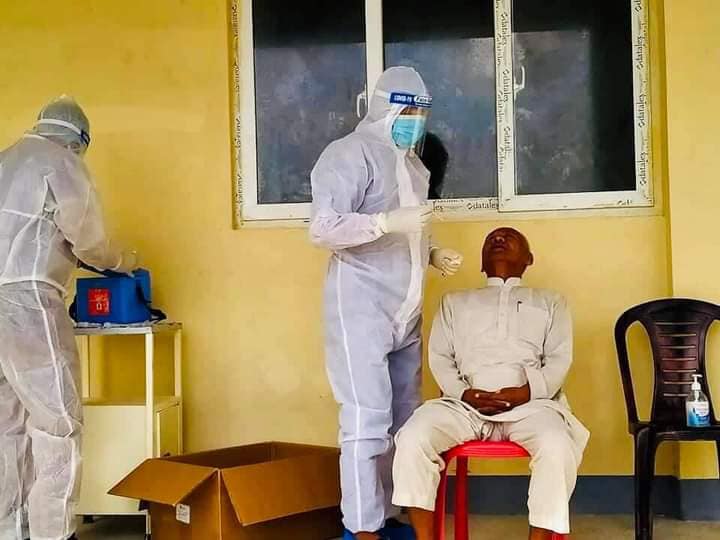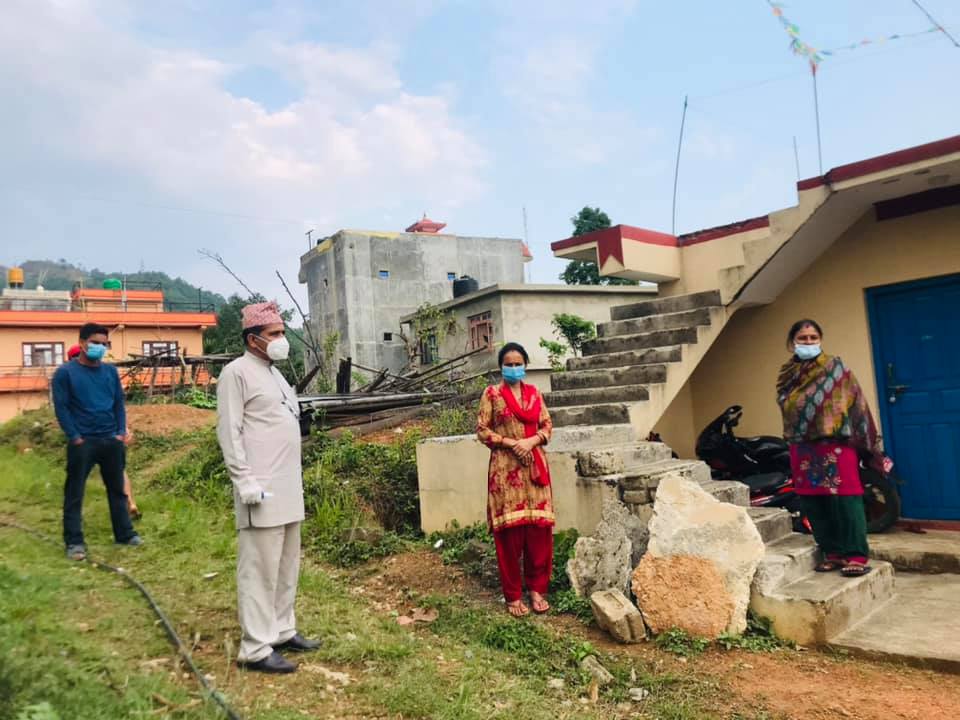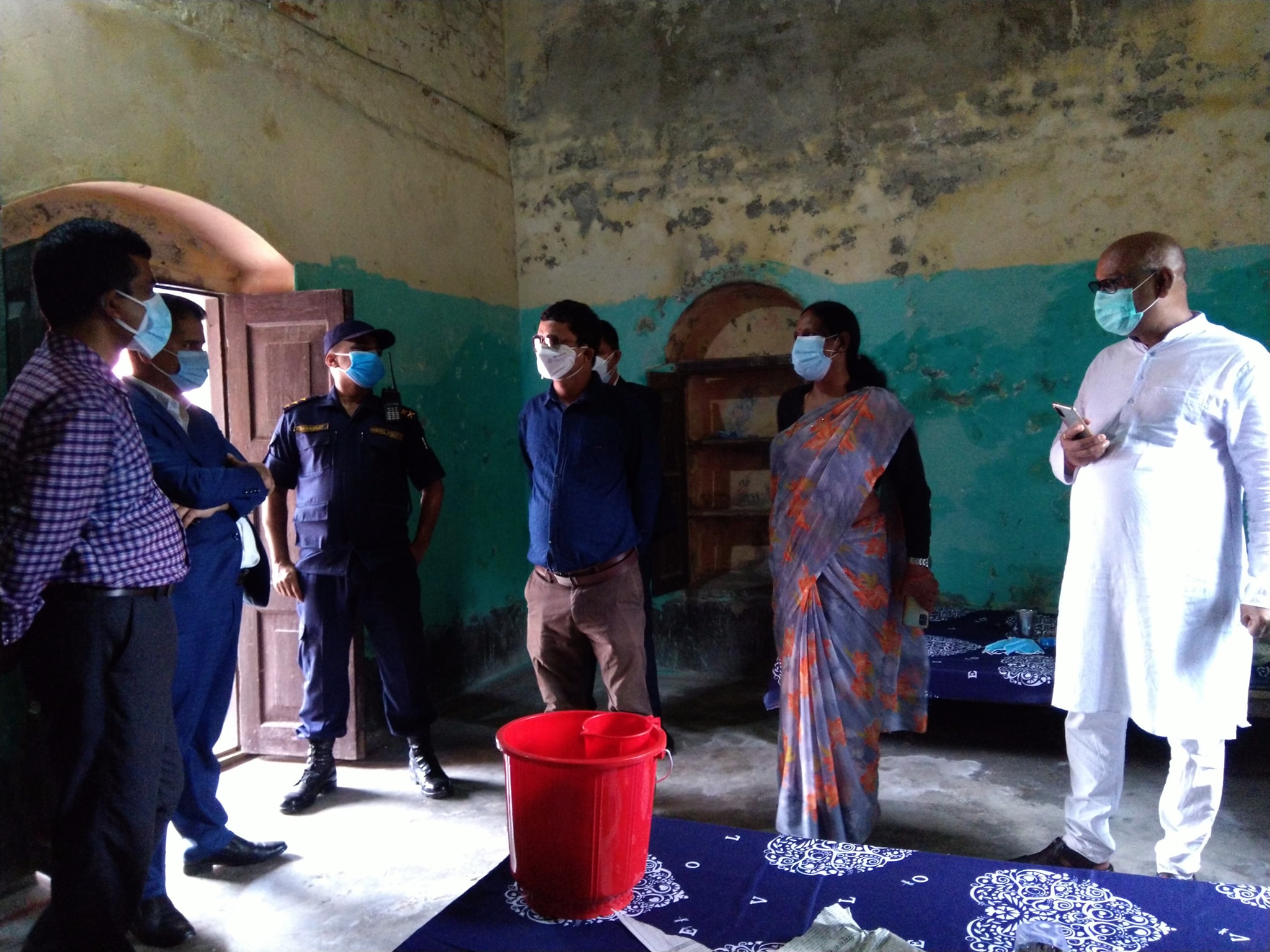As the second wave of the Covid-19 pandemic hit Nepal, governments at all levels were under pressure to make quick decisions to save lives. Perhaps local government representatives who are directly in contact with people day to day were under most pressure to help the infected and save terminally ill patients. While some mayors made tall promises and failed to deliver, others led from the front to fight the pandemic. ApEx talked to the heads of nine local bodies asking about their experience managing the crisis.
Bidur Kumar Karki
Bardibas Municipality
When the second wave of Covid-19 infections hit Nepal and the supply of oxygen needed for treatment was scarce, Bardibas Municipality didn’t have any oxygen plants. As patient numbers began shooting up, the town faced another scarcity: that of trained human resources and medical equipment.
But Mayor Bidur Kumar Karki didn’t give up hope. His team fought the pandemic making the most of available resources. Karki’s most effective program has been ‘Ghar Gharma Swasthakarmi’ through which a team of medical officers visited every house informing people about the disease.
 Free swab collection for Covid-19 testing at Bardibas Municipality
Free swab collection for Covid-19 testing at Bardibas Municipality
When the total positive cases hit 98, the city also enforced a tough lockdown--most citizens abided by it. Karki is thankful to every citizen of his city following prohibitory orders. Thanks to the measures, the number of Covid cases in the town has gone down significantly.
But that doesn’t mean the town should let its guard down, says Karki. “We need to prepare for another wave,” he says. “We realized that If we had a hall in every ward, we would have done much better,” Karki says. “So, our municipality has proposed a plan to construct multi-purpose halls in every ward in the coming fiscal year.”
Bhim Neupane
Panauti Municipality
Because of its proximity to Dhulikhel and Banepa hospitals, Panauti Municipality never felt the need to set up its own hospital. But this pandemic has taught them a lesson.
“We will immediately build a hospital in our area,” says Mayor Bhim Neupane, whose team has worked relentlessly to help save lives at the local level.
He rues not getting any assistance from the provincial or central government. “Our municipality and citizens feel left out,” he says, due to the sheer negligence of the authorities who should be acting like our parents. Yet with the help of civil society and non-profits, we are doing our best, he adds.
Neupane and his team built an isolation center in the town so that patients could get basic treatment. Provisions were also made to rush terminally ill patients to Dhulikhel or Banepa.
“We have enough isolation centers,” Neupane says with confidence as the municipality prepares to fight a possible new wave.
Dilip Kumar Agrawal
Rangeli Municipality
Rangeli municipality didn’t have money to fund its campaign against Covid-19 when the second wave struck.
The city under Dilip Kumar Agrawal stopped all its development works and funneled the money to combating Covid-19. He faced a lot of criticism for making such a bold move.
“We can build roads later,” Agrawal says. “But right now we need to save people’s lives.” There was a small hospital in their district and a new emergency ward was being constructed when the first wave hit. Agrawal and his team turned that emergency building into a treatment center for infected patients.
As they didn’t have enough doctors, the city hired more doctors from nearby districts. The municipality brought in oxygen cylinders and PCR test kits from all over the country.
“Those pieces of equipment were expensive but we didn’t get a dime from the federal government throughout the second wave,” Agrawal says. Budget relocation is going to hurt the municipality’s development but the mayor sees no other option.
Khadga Bahadur Khatri
Kamalamai Municipality
For Kamalamai Municipality, the biggest difficulty was finding a place to isolate sick people. Lack of preparation hurt the town badly and it took time for everyone to come together and build a place for the patients to isolate themselves.
“Finding an appropriate place to set up an isolation center was difficult,” says Mayor Khadga Bahadur Khatri. He and his team allocated a budget for a proper place to keep the patients and a new hospital to treat Covid-19 patients was also built. In addition to the hospital, a total of 47 isolation centres have been set up across town.

Khadga Bahadur Khatri, mayor of Kamalamai Municipality, inquiring about the health of home-isolating people
Following the construction of the new hospital, the city has also installed an oxygen plant to overcome the problem of oxygen shortage.
As only a small number of vaccine doses have been distributed by the federal government to outlying districts, Khatri has ensured that only eligible people get them. The pandemic’s situation has greatly improved in the municipality and Khatri is confident he and his team are better prepared for another wave.
Laxmi Narsing Bade Shrestha
Banepa Municipality
When the pandemic was at its peak in Banepa, says Mayor Laxmi Narsing Bade Shrestha, they didn’t receive any help from the federal government to manage the crisis.
But that didn’t stop Shrestha from taking action. The municipality’s officials raised funds by diverting the money set aside for the people’s representatives’ allowances. Similarly, budgets for other activities were also diverted. Almost Rs 10.5 million has now been allocated for the health sector.
“A separate hospital for Covid-19 patients has been built,” Shrestha shares. “It has the resources we didn’t have six months ago. We weren’t prepared when the first wave hit. But now that we’ve seen how the worst consequences can be averted, I believe we’re a lot more prepared for action if another wave were to come.”
A group of experts and first-responders has been formed to coordinate efforts against the virus and prepare for future waves.
Nar Bahadur Thapa Magar
Ramechhap Municipality
Managing quarantine centers for people coming from Kathmandu and other parts of the country was one of the biggest challenges Mayor Nar Bahadur Thapa Magar and his team faced during the second wave of Covid-19. In addition, conducting PCR tests and contact tracing were also difficult due to the shortage of test kits.
Ramechhap Municipality established an Emergency and Disaster Management Fund and designated a committee of experts to run it. Committee members included representatives of the municipality, head of police, CDO, civil society representatives and hospital officials. The committee set up isolation centers in different parts of the city and made provisions for antigen tests to isolate people infected with Covid-19.
When the city faced an oxygen shortage, Magar worked closely with the district hospital to secure supplies.
Nirsal Sah
Malangwa Municipality
When the second wave of Covid-19 infections emerged in Malangawa, the city was faced with an acute shortage of oxygen.
It was then that Mayor Nirsal Sah understood the importance of setting up an oxygen plant at the municipality. The city has now awarded the contract to do so.
“The oxygen plant that is being installed will come into operation soon,” says Sah, who is disappointed with the federal government for not supporting local officials to manage the Covid-19 crisis.
But that hasn’t stopped Sah from proactively trying to save lives. Despite the challenges, the city has arranged oxygen and ventilators for the ill. It also has plans to build an isolation center by collaborating with neighboring municipalities. Plus, the mayor has plans to rope in more doctors, experts, and medical personnel to work in his area.
Sah is happy with the help and support from civil society, citizens, NGOs, and donors. “They come to the meeting with suggestions and innovative ideas,” he says.
Rita Kumari Mishra
Janakpurdham Sub-Metropolitan City
When the government enforced a lockdown last year to contain the spread of Covid-19, Deputy Mayor of Janakpurdham Rita Kumari Mishra and her team organized a campaign to make people aware of the effects of the disease and to encourage them to stay home.
“In addition to running TV ads and radio programs, we opened isolation wards for the sick as soon as positive cases started coming in,” says Mishra.
When the case-load started growing, the municipality encouraged people to isolate themselves. In emergency cases, they were provided with oxygen cylinders and other necessities rather than having their family members going around searching for them.
 Officials of Janakpur Sub-Metropolitan City inspecting a local isolation center
Officials of Janakpur Sub-Metropolitan City inspecting a local isolation center
“When someone tested positive, we shared medical experts and doctor’s phone numbers with them so that they could call them for guidance or information on their symptoms,” Mishra continues. “This quelled their paranoia and also created space in hospitals for patients who actually needed critical care.”
The local government has created a community to battle the virus. The community is divided into five teams, each visiting different wards and collecting information on which families have been infected, how many need assistance, what medical equipment they need and if they need to be shifted to isolation wards.
The second lockdown, however, hasn’t been as effective as the first one. “Daily wage earners are struggling to stay still as they have families to feed,” she shares. Most frontline and daily wage workers are using precautions to stay safe, so the municipality isn’t arguing with them, she adds.
Vaccine dissemination hasn’t been that good either. Frontline workers and a few older citizens have received the first dose but other than that, the majority is still at risk. The municipality is working to get more vaccines into the region so they can reopen again.
Vijay Kumar Sarawagi
Birgunj Metropolitan City
Birgunj is one of the biggest industrial and economic hubs of the country. This status became a curse for the city during the pandemic as it is home to the biggest border crossing between Nepal and India, the epicenter of the second wave of the Covid-19 pandemic.
Mayor Sarawagi and his team had learned their lesson during the first wave. Lack of testing at the border had allowed infection to spread like wildfire in the city. This time, the city was determined to do something about it.
“We established help desks and health desks at all entry points,” Sarawagi says. The city conducted antigen tests on returnees mobilizing its own resources.
Neither the central government nor provincial authorities helped Birgunj Metropolitan City directly, Sarawagi complains. The government only assisted hospitals and the district administration office.
But Sarawagi is satisfied with the help the city got from the civil society, district administration, police, doctors, and everyone involved. The mayor is now lobbying with the government to provide vaccines to his citizens.
“The only way to save lives is to vaccinate people,” he concludes.












